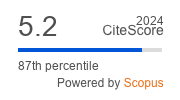Article | Open Access
Drivers and Limits of the Geoeconomic Turn in EU Infrastructure Policy
| Views: | 2824 | | | Downloads: | 2177 |
Abstract: In recent years, the EU has increasingly applied state-interventionist practices to initiate and implement infrastructure policy projects. This stands in stark contrast to a phase of liberalization of infrastructure networks and services accompanying European integration and fiscal consolidation and infrastructure decay during the euro crisis. This article argues that the new state interventionism is strongly driven by the changing global constellation of a “new triad competition” where the EU is increasingly competing over infrastructures with the US and China. As a consequence, EU infrastructure policy undergoes a geoeconomic turn that aims to control transnational value chains and related political-economic spaces. Drawing on concepts of critical geography and international political economy, the article outlines the core features of this geoeconomic design logic of infrastructures and contrasts it with complementary or competing ones. The article substantiates these arguments by analyzing EU decision-making on two cases of high-tech infrastructure in the fields of communication and energy: the federated data infrastructure Gaia-X and the Hydrogen Strategy. Both cases provide evidence for the geoeconomic turn in EU infrastructure policy. Yet, the analysis also highlights that the turn is at times supported but also hampered by a capitalist logic that is reflected in the positioning of European and non-European businesses, as well as the EU’s reliance on private action. Furthermore, it illustrates that an ecological and a social-integrative design logic to key infrastructures are largely subordinated. The conclusions reflect on the discrepancy between the EU’s geoeconomic agenda and its less far-reaching implementation.
Keywords: European integration; European Union; Gaia‐X; geoeconomics; global competition; hydrogen; infrastructure policy
Published:
© Joscha Abels, Hans-Jürgen Bieling. This is an open access article distributed under the terms of the Creative Commons Attribution 4.0 license (http://creativecommons.org/licenses/by/4.0), which permits any use, distribution, and reproduction of the work without further permission provided the original author(s) and source are credited.


